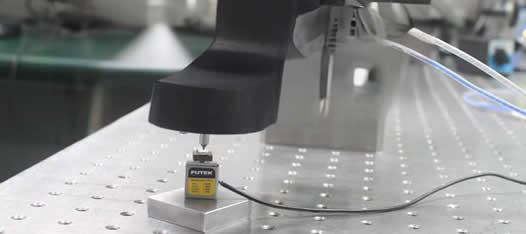|
|
|
|
|
|
Overview of Multi-layer Piezo Ceramics |
|
|
10 May, 2017 |
Piezo Ceramic |
|
|
|

Multi-layer piezo ceramics also known as piezo stacks, are piezoelectric elements which are made of ceramic chips with hundreds of layers and internal electrodes. Compared to single-layer piezos, they have many advantages such as small size, high power density, low drive voltage, low heating power consumption, large displacement and output force, and extremely high displacement resolution, which can achieve Nano-level control accuracy. In addition to good piezoelectric performance, the mechanical performance is also pretty excellent, can withstand harsh high-temperature and high-voltage condition. All these characteristics make piezoelectric actuators have broad application prospects and development potential in electronic product manufacturing fields.
Structure of multi-layer/stacked piezo ceramics
Multilayer PZT ceramics are composed of many ceramic thin sheets that are coupled in alternative orders of internal electrodes, and finally sintered to a complete structure. Generally, the area of each internal electrode layer is smaller than ceramics'. The edges of electrode layers with same polarity are flush with the edges of stacked structure, while the electrode lays of reverse polarity are aligned with the other end of structure and connected to the supply electrodes on both sides of stacked element to form a parallel circuit. The supply positive and negative electrodes are isolated through the insulation PZT material on the other end. Based on this distribution of internal electrode, excessively high multi-layer ceramic structures may cause stress imbalance and affect their service life. The solution is to improve displacement by increasing the overall height. Discrete stacks are composed of multiple stacked piezos which are connected in series by glass bead epoxy resin, to increase displacement, maintain low response delay and drive voltage. Comparing to co-fired stack, the encapsulation method uses a ceramic barrier layer, which has better heat and moisture resistance, larger deformation ability. The co-firing stack is encapsulated through an epoxy resin layer, the entire surface of PZT ceramic is covered by electrode layer. The advantage is that uniform internal stress can be obtained, helpful to activate piezoelectric performance of PZT material. The insulation between internal electrode and external supply electrode can be achieved by fusing fine glass fibers, so the height of the co-fired piezoelectric stacks can exceed that of multi-layer piezoceramics which are insulated by its own ceramic body.
Preparation method of piezoelectric stack
Same as single-layer piezoelectric crystals, the production of multi-layer piezoelectric pieces requires a series of processes including raw material mixing, high-temperature calcination, and grinding. The difference lies in the subsequent processes, cast the slurry onto carrier to form a thin ceramic material, and then precious metal pastes such as platinum and palladium are printed on the surface of ceramic layer to form internal electrodes with predetermined pattern. Complex piezo actuators require multiple different designs. The prepared crystal layers are stacked in order to prepare piezoelectric blocks, and appropriate pressure is applied for lamination treatment to ensure certain contact between layers. The multi-layer piezo ceramic body can be completed by cutting or grinding process, it's very important to strictly follow the internal electrode pattern during cutting. Slowly heat the shaped stacks to around 600 ? to remove organic compounds and evaporate remaining additives or adhesives in ceramic. In order to form a denser structure inside piezoelectric crystal, high temperature sintering process based on certain temperature and time is necessary. External electrode treatment can be carried out after sintering process, produce a parallel circuit with internal electrodes between each layer, common used electrode coating methods include screen printing and sputtering, silver coating can be made by method of firing slurry. Polarization occurs under conditions of high temperature and high voltage. High electric field of several thousand volts is applied through external electrode, and the polarization time should be controlled to ensure sufficient polarization. This is a key step for piezoelectric components to have good piezoelectric effects. Finally, Inspection and packaging subject to criterion, test various parameters of stacked piezo components such as size, capacitance, frequency, displacement, thrust, etc.
Applications of piezo stack actuators
Stacked piezoelectric ceramics can be packaged into piezoelectric actuators, due to their excellent piezoelectric performance and mechanical properties, widely used in broad fields such as semiconductors, communications, biotechnology, machining, optics, pharmaceuticals, etc. In semiconductor industry, nanoscale alignment and positioning with large travel can be realized, and piezo actuators with high thrust are used for active vibration reduction. In the fields of optoelectronic communication, it can be used for automatic focusing, optic fiber strain and kinds of optoelectronic packaging and testing systems. In terms of biomedical technology, cells can be tracked and arranged quickly by piezo actuators, also help microscopes focus quickly, and use piezoelectric systems for drug screening. Precision machining applications mainly use stacked actuators to improve the machining accuracy and service life for metal processing, laser welding or diamond cutting. Typical application is to use piezoelectric tool feed servo systems for micro or nano level machining on workpieces with complex structure. Nano automation technology requires extremely high precision and speed, piezoelectric positioning systems are widely applied in nano assembly, nano imprinting, nano bonding and nano material testing. Piezoelectric positioning and scanning platforms have become important tools for high-resolution micro vision and imaging. Researchers can obtain high-quality imaging results in the shortest possible time by utilizing advantages of ultra-high resolution and fast responsive focusing. With further innovation in science technology and preparation methods, the future of piezoelectric stack actuators will develop towards miniaturization, integration, multifunctionality and greenness.
|
|
|
« Back |
|
↑ Top |
|
|
|
|
 Downloads
Downloads Sitemap
Sitemap Downloads
Downloads Sitemap
Sitemap